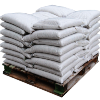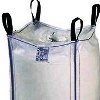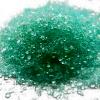| Aadhunik Industries is a manufacturing group company. Aadhunik Industries is pioneer manufacturers of Specialty Chemicals, Pharmaceutical Excipients, Food Fragrance & Flavor chemicals in India. It has toll manufacturers and representatives in UAE, Europe, Canada & USA and agents & customers in all countries like USA, Canada, Europe, UAE Dubai, Tanzania, Kenya, Egypt, Nigeria, Uganda, Turkey, Mexico, Brazil, Chile, Argentina, Malaysia, Indonesia, Thailand, Korea, Japan, etc. Halal & Kosher certified Ferrous Sulfate Manufacturers made in a FDA-GMP plant is offered. |
| The units have one or more of the certifications like FDA GMP, ISO 9001, ISO 22000, HACCP, REACH, Kosher & Halal and DMF support is available. |





Ferrous Sulfate SDS MSDS Sheet of Manufacturers
Specifications of Ferrous Sulfate Manufacturers
Ferrous Sulfate SDS GHS, MSDS Sheet, Material Safety Data Sheet
1. Product Identification
Synonyms: Ferrous Sulfate Heptahydrate, Ferrous Sulphate Heptahydrate. Other Hydrates also have the same CAS Number.
CAS No.: 7782-63-0
EINECS EC Number: 231-753-5
Molecular Weight: 278.01
Chemical Formula: FeSO4.7H2O (Other Hydrates also have the same CAS Number).
Recommended usage: Industrial Manufacturing.
2. Hazards Identification
GHS, Globally Harmonized System Classification in accordance with 29 CFR 1910
Classification according to Regulation (EC) No 1272/2008
Acute toxicity, Oral (Category 4), H302
Skin irritation (Category 2), H315
Eye irritation (Category 2), H319
Labeling according GHS & Regulation (EC) No 1272/2008
GHS Label Elements  Irritant |
Signal Words: Warning
Hazard statements:
H302: Harmful if swallowed.
H315: Causes skin irritation.
H319: Causes serious eye irritation.
Precautionary statements:
P264: Wash … thoroughly after handling.
P270: Do not eat, drink or smoke when using this product.
P280: Wear protective gloves/protective clothing/eye protection/face protection.
P330: Rinse mouth.
P362: Take off contaminated clothing and wash before reuse.
P301+312: IF SWALLOWED: Call a POISON CENTER or doctor/physician if you feel unwell.
P302+352: IF ON SKIN: Wash with soap and water.
P332+313: If skin irritation occurs: Get medical advice/attention.
P305+351+338: IF IN EYES: Rinse cautiously with water for several minutes. Remove contact lenses if present and easy to do – continue rinsing.
P337+313: If eye irritation persists get medical advice/attention.
P501: Dispose of contents/container to authorized agents only.
Classification according to EU Directives 67/548/EEC or 1999/45/EC:
Xn Harmful R22
Xi Irritant R36/38
For the full text of the H-statements & R-phrases mentioned in this Section, see Section 16.
3. Composition/Information on Ingredients
Ingredient: Ferrous Sulfate
CAS No.: 7782-63-0
EINECS EC Number: 231-753-5
Percent: 97 - 100%
4. First Aid Measures
Always seek medical attention after first aid measures are provided.
Inhalation: Remove to fresh air. If not breathing, give artificial respiration. If breathing is difficult, give oxygen. Get medical attention.
Ingestion: Never give anything by mouth to an unconscious person. Get medical attention.
Skin Contact: Wipe off excess material from skin then immediately flush skin with plenty of water for at least 15 minutes. Remove contaminated clothing and shoes. Get medical attention. Wash clothing before reuse. Thoroughly clean shoes before reuse.
Eye Contact: Immediately flush eyes with plenty of water for at least 15 minutes, lifting lower and upper eyelids occasionally. Get medical attention immediately.
5. Fire Fighting Measures
Flammability of the Product: Non-flammable.
Products of Combustion: Sulfur oxides, Oxides of Iron etc.
Fire Extinguishing Media: Use water spray, alcohol-resistant foam, dry chemical or carbon dioxide. Use means suitable for extinguishing surrounding fire.
Special Information: In the event of a fire, wear full protective clothing and NIOSH-approved self-contained breathing apparatus with full face piece operated in the pressure demand or other positive pressure mode. At high temperatures or when moistened under fire conditions, it may produce toxic or irritating fumes. On decomposition it may emit hydrogen iodide. Containers may explode on heating
6. Accidental Release Measures
Small Spill: Avoid dust formation. Avoid breathing dust. Ensure adequate ventilation. Use appropriate tools to put the spilled solid in a convenient waste disposal container. Finish cleaning by spreading water on the contaminated surface and dispose of according to local and regional authority requirements.
Large Spill: Avoid touching the spilled material. Do not let the product enter drains. Use a shovel to put the material into a convenient waste disposal container. Finish cleaning by spreading water on the contaminated surface and allow to evacuate through the sanitary system.
7. Handling and Storage
Do not breathe dust. Wear suitable protective clothing. In case of insufficient ventilation, wear suitable respiratory equipment.
Avoid contact with skin and eyes. Avoid formation of dust and aerosols. Wash hands thoroughly after handling. Provide appropriate exhaust ventilation at places where dust is formed. If you feel unwell, seek medical attention.
Keep Ferrous Sulfate in a tightly closed container, stored in a cool, dry, ventilated area. Protect against physical damage.
8. Exposure Controls/Personal Protection
Airborne Exposure Limits:
Exposure Limit and Source
TWA 1 mg/m3 US. ACGIH Threshold Limit Values (2011)
REL 1 mg/m3 US. NIOSH: Pocket Guide to Chemical Hazards (2010)
TWA 1 mg/m3 US. OSHA Table Z-1-A (29 CFR 1910.1000) (1989)
Ventilation System: A system of local and/or general exhaust is recommended to keep employee exposures as low as possible. Local exhaust ventilation is generally preferred because it can control the emissions of the contaminant at its source, preventing dispersion of it into the general work area.
Personal Respirators (NIOSH Approved): For conditions of use where exposure to dust or mist is apparent and engineering controls are not feasible, a particulate respirator may be worn. For emergencies or instances where the exposure levels are not known, use a full-face positive-pressure, air-supplied respirator.
Skin Protection: Wear protective gloves and clean body-covering clothing.
Eye Protection: Use chemical safety goggles and/or full face shield where dusting or splashing of solutions is possible. Maintain eye wash fountain and quick-drench facilities in work area.
Other Control Measures: Maintain good housekeeping in work area. Dust deposits on floors and other surfaces may pick up moisture and cause the surfaces to become slippery and present safety hazards. Handle in accordance with good industrial hygiene and safety practice. Wash hands after handling.
9. Physical and Chemical Properties
Appearance: Ferrous Sulfate is bluish green powder or crystals.
Odor: It is odorless.
Solubility: It is freely soluble in water.
pH: 3-4.
Density: 1.9 g/mL at 20C (68F)
Molecular Weight: 278.01
Chemical Formula: FeSO4.7H2O (Other Hydrates also have the same CAS Number).
% Volatile by volume @ 21C (70F): -
Boiling Point: >300C
Melting Point: 64C
10. Stability and Reactivity
Stability: Ferrous Sulfate is stable under ordinary conditions of use and storage.
Hazardous Decomposition Products: It emits toxic sulfur fumes and iron oxide when heated to decomposition.
Hazardous Polymerization: Will not occur.
Incompatibilities: Strong oxidizing agents and alkalies.
Conditions to Avoid: Incompatibles heat, light and moisture.
11. Toxicological Information
Acute toxicity
Harmful if swallowed. Harmful if inhaled.
Toxicity data
LD50 Oral - Mouse - 1,520 mg/kg (Ferrous sulfate heptahydrate)
LD 50 Oral (Rat) - 319 mg/kg (Ferrous sulfate heptahydrate)
LD50 Intraperitoneal - Mouse - 245 mg/kg (Ferrous sulfate heptahydrate)
LD50 Intravenous - Mouse - 51 mg/kg (Ferrous sulfate heptahydrate)
Carcinogenic Effects: Not a reported carcinogen by IARC NTP ACGIH OSHA.
12. Ecological Information
Toxicity to fish: LC 50 (Brook trout (Salvelinus fontinalis), 96 h): 0.41 mg/l
Toxicity to daphnia and other aquatic invertebrates: EC 50 (Water flea (Daphnia magna), 48 h): 6.15 mg/l
Environmental Toxicity: This chemical is expected to cause little oxygen depletion in aquatic systems.
PBT and vPvB assessment: This substance/mixture contains no components considered to be either persistent, bioaccumulative and toxic (PBT), or very persistent and very bioaccumulative (vPvB) at levels of 0.1% or higher.
13. Disposal Considerations
Whatever cannot be saved for recovery or recycling should be managed in an appropriate and approved waste disposal facility. Processing, use or contamination of this product may change the waste management options. State and local disposal regulations may differ from federal disposal regulations. Dispose of container and unused contents in accordance with federal, state and local requirements.
14. Transport Information
US DOT, ADR/RID Classification: Not regulated.
Canada TDG Classification: Not regulated.
IATA: Not regulated.
15. Regulatory Information
USA:
SARA 313 Components: No chemicals in this material are subject to the reporting requirements.
SARA 311/312 Hazards: Immediate (acute) health hazard Delayed (chronic) health hazard.
California Prop.65: Not Listed.
Canada - WHMIS: Uncontrolled product; Disclosure at 1%.
Canada - DSL/NDSL: Listed on Canada's DSL List.
16. Other Information
EINECS: EC Number: 231-753-5
H302 = Harmful if swallowed.
H315 = Causes skin irritation.
H319 = Causes serious eye irritation.
Xn Harmful.
Xi = Irritant.
R22 Harmful if swallowed.
R36/38 Irritating to eyes and skin.
DISCLAIMER: The information and recommendations set forth herein (hereinafter "Information") are presented in good faith and believed correct as of the date hereof. It is compiled from various sources and it is not necessarily all inclusive nor fully adequate in every circumstance. In addition, these suggestions should not be confused with nor followed in violation of applicable laws, regulations, rules or insurance requirements applicable. This MSDS sheet is intended only as a guide to the appropriate precautionary handling of the material by a properly trained person using this product. Individuals receiving the information must exercise their independent judgment in determining its appropriateness for a particular purpose.
Ferrous Sulfate BP USP FCC Food ACS Reagent Grade Manufacturers
Aadhunik Industries
Ankleshwar Gujarat &, Mumbai, India
TEL: (OFFICE) 91-22-23774610, 23723564.
e-mail: info@aadhunikindustries.com

Exports to USA, Canada, UAE, Dubai, South Africa, Tanzania, Kenya, Nigeria, Egypt, Uganda, Turkey, Mexico, Brazil, Chile, Argentina, Europe Netherlands, Italy, Spain, Germany, Portugal, France, Malaysia, Indonesia, Thailand, Korea, Japan, Vietnam, etc.
Copyright and Usual Disclaimer is Applicable